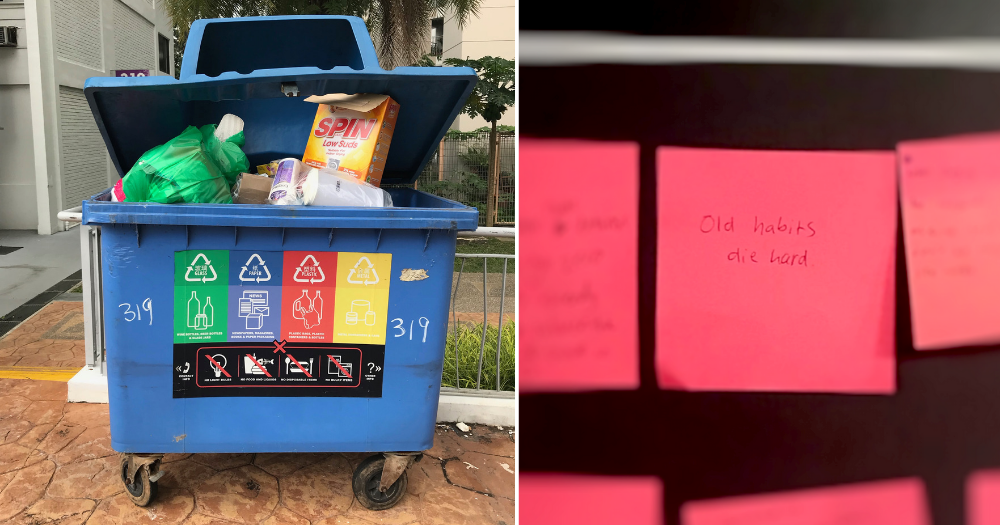You might have heard about Singapore's one and only landfill on Pulau Semakau.
You might have learned about it in this Nas Daily video:
Or perhaps this one:Or perhaps you knew about it all along.Cool? I agree, I suppose.
But that happening little pond that doesn't touch the sea is filling up fast. The Ministry of Environment and Water Resources (MEWR) predicts it'll be topped off by 2035.
In the year 2017 alone, the country produced 7.7 million tonnes of waste, equivalent to around 15,000 Olympic-sized swimming pools, according to MEWR, with a (to be fair) reasonably respectable 60 per cent of that amount recycled.
And so this year, MEWR has declared 2019 the Year Toward Zero Waste. They're wise to word it as "toward", because I am without doubt that the ambition for a country like ours to be "zero-waste" is a lofty one, at best.
Which begs the question, why is it so hard for Singaporeans (like myself, actually) to waste less?
Convenience cited as a significant reason
I think a main reason for the sheer volume of waste can be attributed to our love for convenience — and it also appears that other millennials are inclined to agree with me.
At a sustainable workshop organised by IKEA in June, participants from various local universities and polytechnics were asked to write on Post-Its their answers to the question: "What are your obstacles to living a zero-waste lifestyle?"
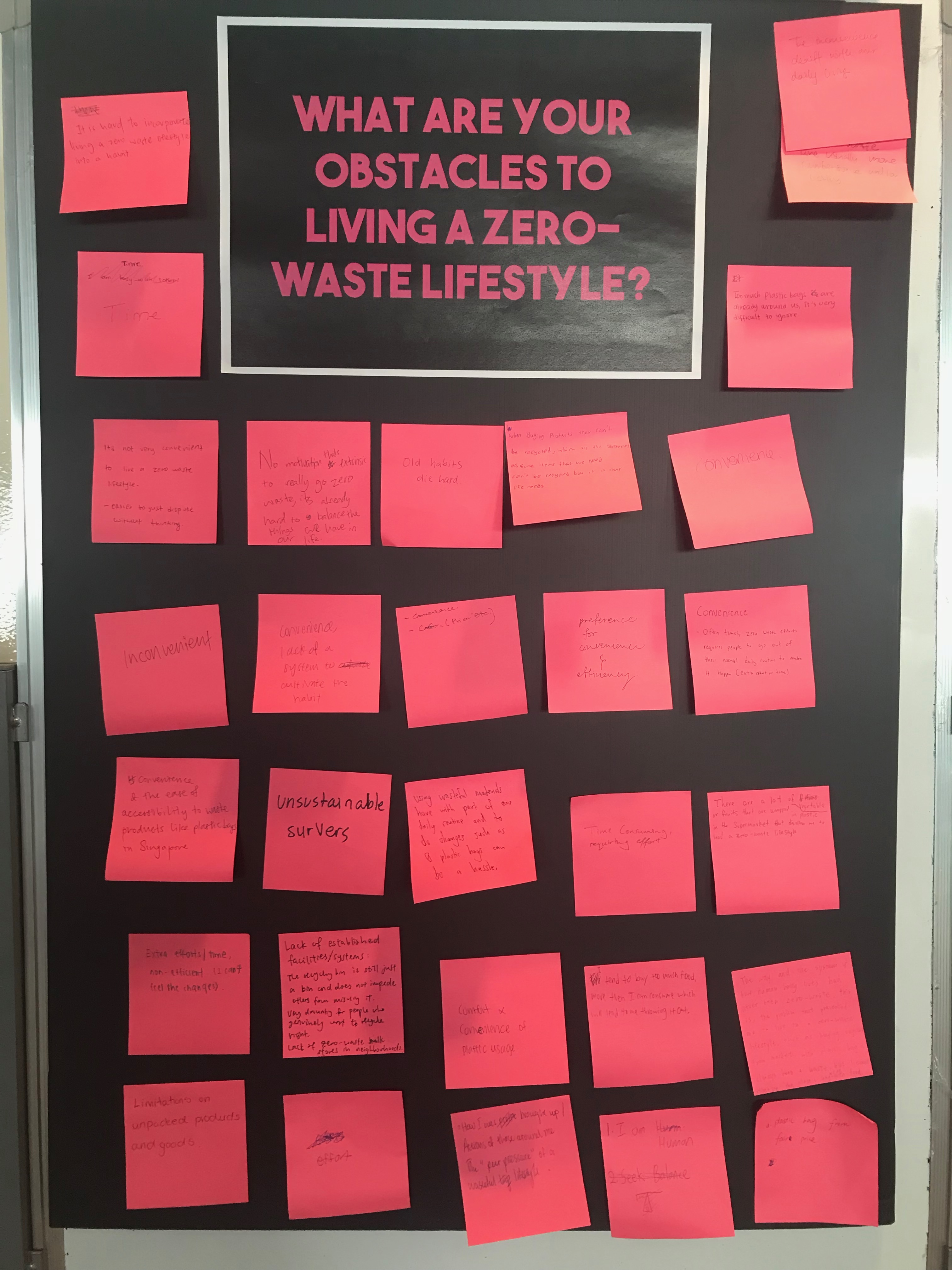 Photo by Ashley Tan
Photo by Ashley Tan

 Some students responded with single words like "convenience", "time" and "effort", while others commented that it was "easier to just dispose of without thinking" or that it was "hard to incorporate living a zero-waste lifestyle into a habit".
Some students responded with single words like "convenience", "time" and "effort", while others commented that it was "easier to just dispose of without thinking" or that it was "hard to incorporate living a zero-waste lifestyle into a habit".
Similar sentiments are also echoed by the large majority of Singaporeans, it seems. A 2018 report by the Singapore Environment Council found that four in 10 Singaporeans cited inconvenience as the main reason for not recycling.
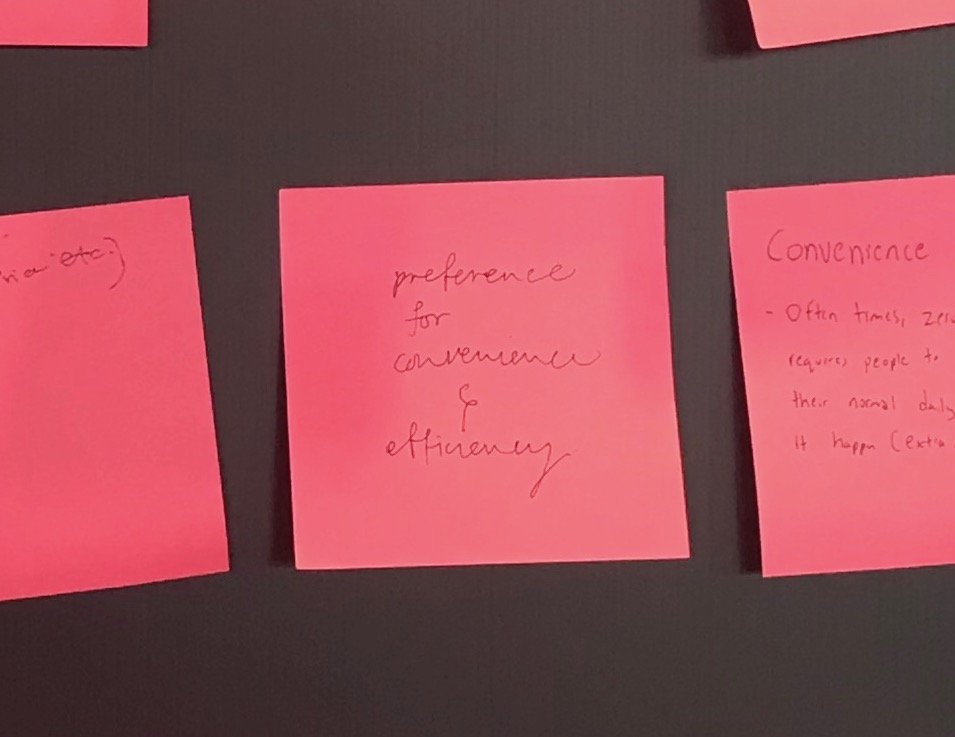 Photo by Ashley Tan
Photo by Ashley Tan
To be fair, the government has tried to make recycling as convenient a process as possible for us, putting those large blue recycling bins at the foot of every HDB block and at the entrances of landed properties.
It looks like we're not responding very well, though — the domestic recycling rate (the waste collected from public and private housing estates and schools), has reportedly hovered around a dismal 20 per cent since 2005.
Going green takes time and a whole lot of effort
Time is a precious commodity in fast-paced Singapore, and going green comes at the cost of convenience.
A common gripe when it comes to switching out disposables for eco-friendly reusables is undoubtedly the time needed to wash them after meals.
It's also easy to simply forget to bring reusables when taking away food or eating out.
I've forgotten to bring my reusable cutlery set out for lunch on countless occasions — this is despite me having them in my desk drawer less than an arm's reach away.
Even plastic straws, which have become a convenient public enemy number one of the green movement, are difficult for me to ditch. Sometimes, despite being a purported advocate for animals, nature and the environment, I hesitate to use my metal straw just because drinking from plastic straws is a habit ingrained in me since young.
I also feel a drink tastes different to me with metal between my lips. Sure, it's likely to be psychological on my part, but there is a reason McDonald's Coke tastes better than others — apparently, a straw they engineered with a slightly wider opening.
Indeed, yet another barrier I need to overcome if I want to do good for the planet.
Lack of demand for eco-friendly options, pushing prices up
Perhaps increasing access to eco-friendly products, or having more zero-waste stores in the vicinity, might spur them to waste less.
But how would one do so in a society where conveniently churning through consumables is a norm?
The fact remains that current demand for eco-friendly options in Singapore is too low for such stores to be distributed so widely.
The lack of demand is also likely one reason why eco-friendly products are usually much pricier, as compared to disposables.
Going green comes at a price. Literally.
Here's a breakdown of how much more expensive they can be.
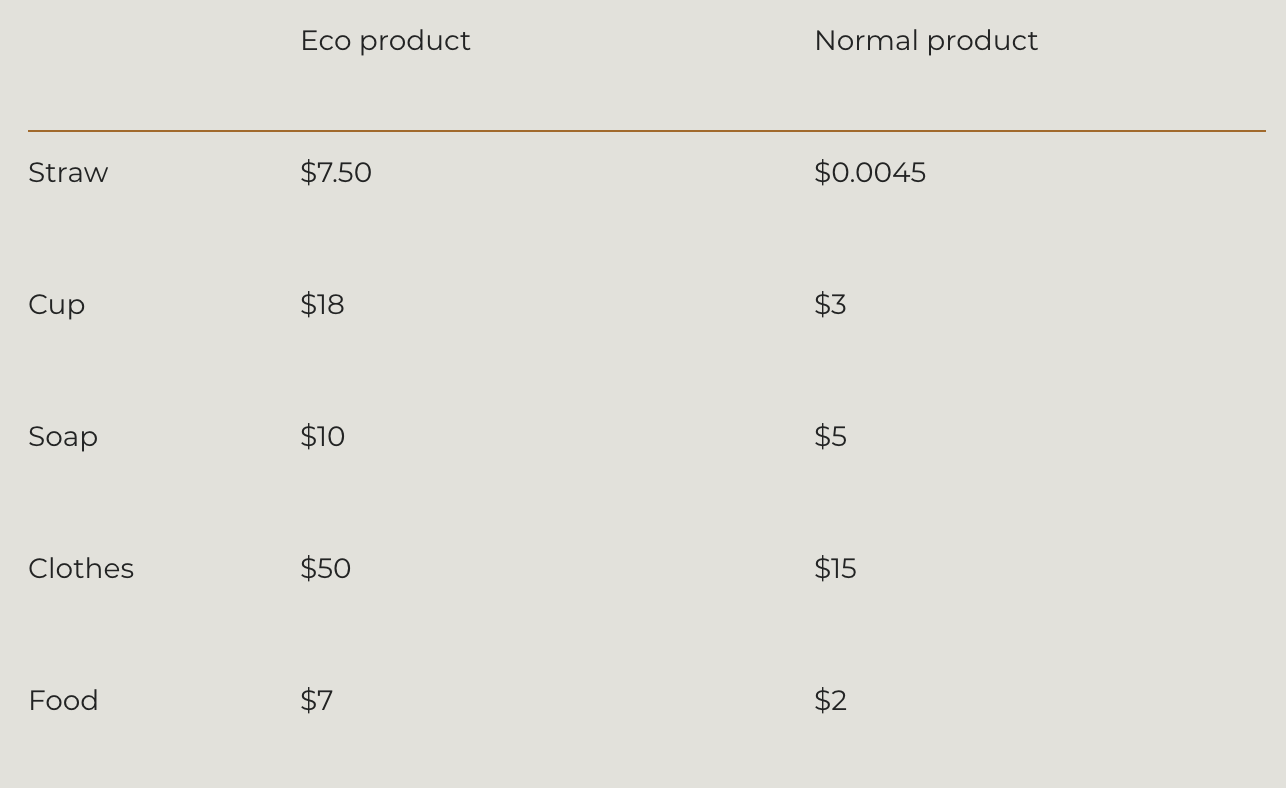 Photo from Seastainable.co
Photo from Seastainable.co
A plastic straw could cost half a cent in the United States, which would equate to S$0.014. Compare that to a metal straw I bought (which comes with a straw cleaner and woven bag), which cost around S$7.
For many Singaporeans, including broke millennials like myself, opting for green products will definitely put a dent in their pockets.
But I suppose this is still better than nothing right? (RIP wallet, though.)
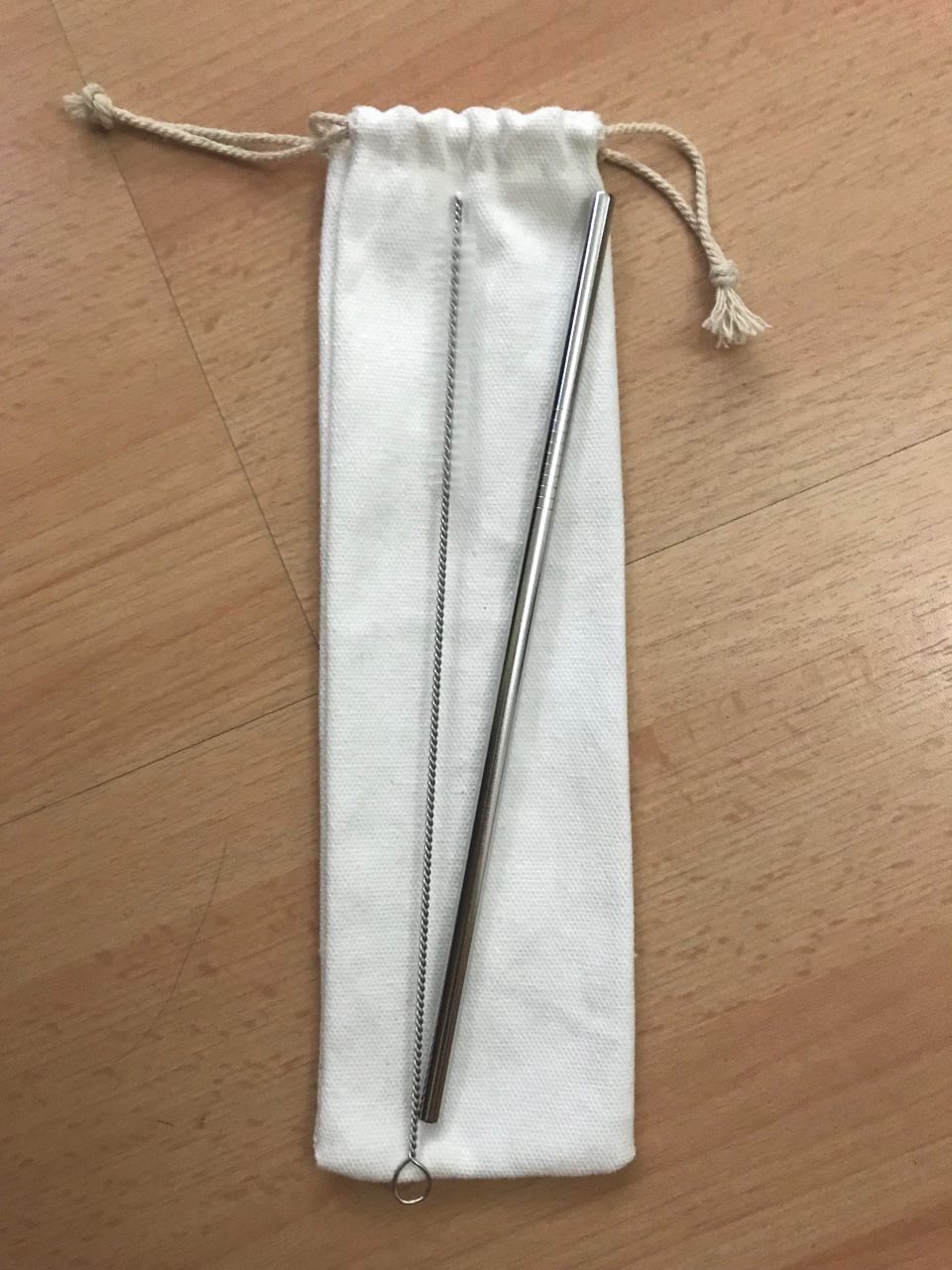 The metal straw set I bought for seven bucks. Photo by Ashley Tan
The metal straw set I bought for seven bucks. Photo by Ashley Tan
The role of businesses
In view of its "zero-waste" target, our government has been ramping up public education efforts to encourage Singaporeans to waste less.
And yet, as you likely feel too, it's hard to imagine life without plastics.
Just consider how almost all types of packaging for all products consist of plastic — buy bread or pastry from a bakery, and it is packed in a small plastic bag, and then plunged into another plastic carrier with handles. Even bubble tea straws these days come wrapped in an outer layer of plastic for hygiene purposes.
That being said, an increasing number of businesses are coming around to and aboard the idea of zero-waste.
In June this year, quite a number of businesses in the food and beverage sector here have made the effort to remove some single-use plastic from their premises by pledging to go straw-free.
Although these businesses should be commended for their efforts, removing plastic straws is but the tip of the iceberg when it comes to greening their supply chains.
And unfortunately, businesses that are truly zero-waste are still few and far between in Singapore.
We all have to start somewhere, so why not with ourselves?
Keeping all these factors in mind — convenience, time and accessibility — is going zero waste even still a possibility in Singapore? In my opinion, unlikely.
But that doesn't mean we should remain apathetic about the environment. This is our future at stake here.
Even if the government does not pass legislation, particularly regarding the use of plastic, every effort counts. The whole is greater than the sum of its parts, as the common adage goes.
Despite large corporations being the major culprits behind the deterioration of the environment, consumers (that's us) must do our part to alter our habits too. It takes two hands to clap, and reducing the waste we collectively generate is something we can work towards as individuals.
During the workshop, several students said they would be motivated by peer pressure and/or a companion adopting a zero-waste lifestyle alongside them.
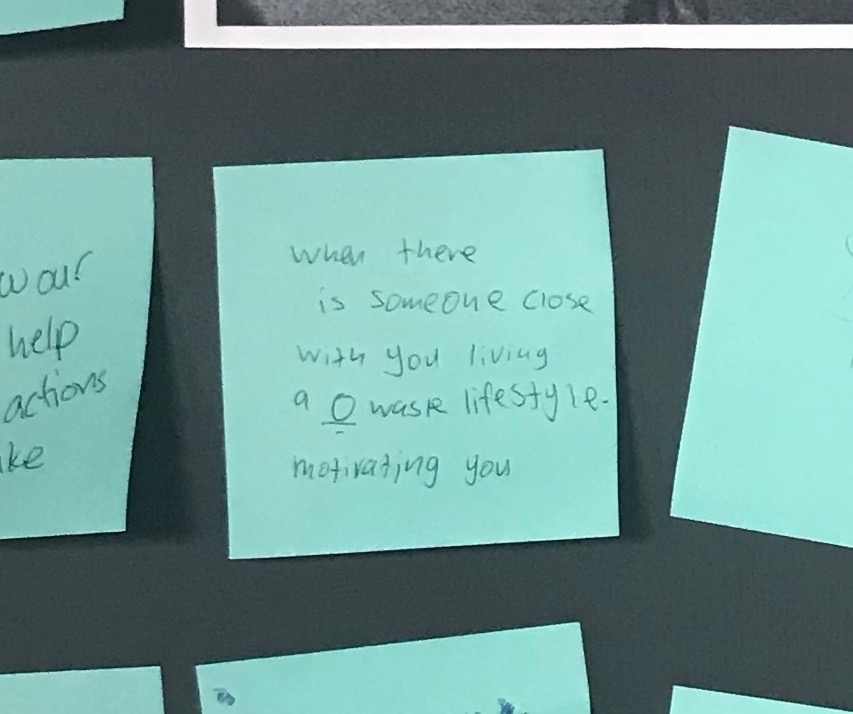 Photo by Ashley Tan
Photo by Ashley Tan
Perhaps the only way for a zero-waste sustainable lifestyle to become accessible to the average Singaporean would be to make sustainable living more mainstream.
If consumers consciously choose to take the first step, we might encourage friends and family around us to do the same and spark change for the better.
I get it. The decision to refuse that straw, or decline that plastic carrier bag, or recycle that one cardboard box might seem measly initially. But know that ultimately, these actions are cumulative.
Who knows how much waste could be reduced in a lifetime, multiplied by all the people who could become a part of the zero-waste movement?
And maybe if we take that first step beyond our comfort zone, there might be some hope for the environment after all.
Top photo from Ashley Tan
If you like what you read, follow us on Facebook, Instagram, Twitter and Telegram to get the latest updates.
